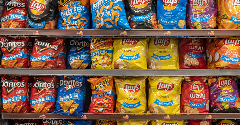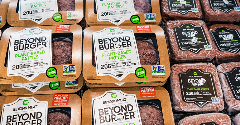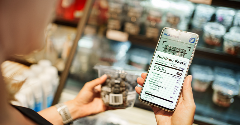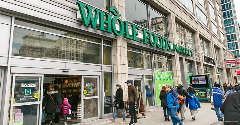News
Bakers Under Fire Once More in Wholegrain Controversy
1 Oct 2013Two publications have been causing a stir this year in the bakery world for suggesting – and by no means for the first time – that manufacturers are misusing “wholegrain” and similar descriptions on products which often contain a pitifully small quantity of whole grains and/or too much sugar. Not all is healthy that is […]

Two publications have been causing a stir this year in the bakery world for suggesting – and by no means for the first time – that manufacturers are misusing “wholegrain” and similar descriptions on products which often contain a pitifully small quantity of whole grains and/or too much sugar.
Not all is healthy that is wholegrain
The first of these papers came in the shape of a study in which 545 bakery products purchased at two different grocery retail chains were analysed by researchers from the highly prestigious Harvard University. The study was published in Public Health Nutrition in January 2013.
The Harvard investigators lamented the fact that there was no consistent regulation as to what actually defined a wholegrain product, never mind what could be marketed as such. One of the key conclusions reached by the researchers was that for those grain-based products which did not sport an FDA-approved health claim, the inconsistent nature of labelling of wholegrain content made it difficult for consumers to identify those products that were inherently healthy.
For instance, the authors were concerned that the industry-backed Whole Grains Council’s WG Stamp, used on around 7,500 products in a number of countries, was potentially misleading consumers by implying healthfulness despite some of these products’ considerable sugar content.
The high sugar issue has repeatedly been flung into the face of bakery companies, and breakfast cereal manufacturers make for a particularly popular target. Foodwatch, a German consumer advocacy organisation, severely lambasted Nestlé once again last summer for the fact that a number of its children’s breakfast cereals, marketed as containing 8g of whole grains per portion, contained up to 25% sugar by weight.
Not enough wholemeal flour, too many additives
The second high-profile publication pouring scorn on bakery manufacturers’ wholegrain marketing this year so far was a report published on 27 February 2013 by the Real Bread Campaign in the UK, entitled A Wholegrain of Truth.
The report’s primary criticism was aimed at the fact that many industrially produced bread loaves marketed as containing ‘wholegrain’ turned out to have fairly little wholegrain content. For instance, Kingsmill Oatilicious (Associated British Foods) contained 19% malted wholemeal flour and 2% whole oat flakes, while Waitrose White & Wholegrain private label bread only mustered a wholegrain content of 6%.
In an interview following the publication of the report, the Real Bread Campaign’s co-ordinator was quoted as taking issue with the fact that even just one teaspoon of wholegrain flour added to a loaf mix would, in theory, qualify the end product to be labelled “wholegrain” just because it contained the ingredient.
Hence, the report’s authors were calling for more government legislation to review the use of the terms ‘wholegrain’, ‘wheatgrain’, ‘whole’ and ‘goodness’.
Criticism was also doled out over the fact that many loaves labelled “wholemeal”, which, by UK law, can only contain flour that is 100% wholegrain, listed soya flour and wheat gluten powder as added ingredients. Although this is not illegal because these additives are not technically flour, the investigators nevertheless considered this practice to be a “dilution” of a product, which, in their opinion, should consist of nothing but whole wheat flour, water, yeast and salt.
Consumer acceptance issue remains
Predictably, when these publications hit the spotlight, they caused a fair amount of ruckus. A number of industry bodies, such as the UK’s Federation of Bakers, mounted a number of convincing counter-arguments to defend some of the industry’s commonly employed formulation and marketing practices.
Bakers are, undeniably, stuck between a rock and a hard place. They would surely like to sell more products that are close to 100% wholemeal, but consumer enthusiasm for dense-textured bread, particularly in markets where such bakery products are not part of local baking tradition, tends to be limited.
Our statistics show that the Netherlands, Belgium, Denmark, Norway and Finland rank highest in terms of per capita NH high fibre bread retail volume sales. The Netherlands mustered 26.5kg per capita in 2012, and Finland 14.7kg. The US, France, Spain and Italy, where fluffy white bread rules, managed around 3kg.
Consumers know by now that whole grains are healthier than refined ones, but actually getting them to eat products made exclusively from wholemeal flour is quite another matter. It is both understandable and commendable that bakers are experimenting with the amounts and mixtures that are most successful at garnering sufficient consumer acceptance to result in viable mass-market products.
Let’s make it at least 50% wholegrain
However, it does seem somewhat disingenuous to market a product as wholegrain if only a negligible percentage of the flour is actually wholegrain, even if the exact percentage is stated on the ingredients label.
Front-of-pack statements akin to ‘made with whole grains’ are in the same league as ‘all natural’, ie they are essentially meaningless as no legally binding definition exists, and manufacturers which choose to use them will have to be prepared to face perpetual scrutiny and fend off criticism.
Rather than waiting for legislation to level the playing field, it is advisable to be proactive and raise the bar by striving for a sensible, industry-wide solution. The US Department of Agriculture’s official My Plate healthy eating recommendations for consumers state that “at least half of all the grains eaten should be whole grains”. Therefore, it would make sense to apply terms like “wholegrain” to products which consist of at least 50% wholegrain flour.
The Real Bread Campaign’s call to ban ingredients like wheat gluten and soya flour from wholemeal products is unrealistic to say the least. The practice of adding such innocuous ingredients in order to achieve a product with a palatable texture is hardly a threat to any baker’s reputation. Excessive sugar content, on the other hand, especially in ‘wholegrain’ breakfast cereals, will remain a major sticking point.
Related news

PepsiCo formulates ‘naked’ Cheetos and Doritos products
31 Dec 2025
US food giant PepsiCo has launched its Simply NKD range, a move it says reimagines its popular products with new formulations free from artificial flavours, dyes, and colours.
Read more
Debate over ban on ‘meaty’ names for plant-based products reaches stalemate
26 Dec 2025
The debate over a ban on plant-based products using “meaty” terms has reached a stalemate, leaving manufacturers in limbo and still facing overhauls to their marketing and packaging.
Read more
Has ‘clean’ had its day?
22 Dec 2025
Wielding clean-label positioning and fortification as marketing levers is a dangerous strategy, and brands would be better off explaining the hows and whys of the ingredients in their products, say experts.
Read more
Pioneers of circular plastic packaging push for new policies
18 Dec 2025
Some of the world’s largest food and drink companies have grown frustrated at investing in circular packaging systems, as the majority “wait on the sidelines”.
Read more
Whole Foods Market forecasts fibre frenzy for 2026
11 Dec 2025
Whole Foods Market has released its top 2026 trends, predicting that a fibre frenzy will take place next year as health-conscious consumers seek out nutritious, filling options.
Read more
Sorghum emerges as better-for-you hero ingredient
9 Dec 2025
With the launch of Novak Djokovic’s sorghum-based brand, the grain’s popularity in the better-for-you snacking sphere is on the rise, thanks to its nutritional and sensory properties.
Read more
Innovation promise in 'maturing' plant-based dairy alternatives market
8 Dec 2025
Plant-based dairy is a maturing market that still faces significant hurdles around taste, functionality, nutrition, and price, but industry is innovating fast, according to experts speaking at Fi Europe.
Read more
Turning global trade challenges into opportunities
4 Dec 2025
While our food innovation ecosystem is in a healthy place, certain barriers persist. A panel of experts at Fi Europe shared their ideas and strategies for overcoming these, to fully unleash Europe’s potential.
Read more
Celebrating the winners of the Fi Europe Innovation Awards 2025
3 Dec 2025
Food industry stakeholders celebrated as the winners of the Fi Europe Innovation Awards were announced at a ceremony in Paris.
Read more
Yuka’s food scanning app helps consumers make healthier choices
2 Dec 2025
Global food scanning app Yuka helps consumers understand the content of their shopping baskets and shapes producers’ reformulation plans.
Read more